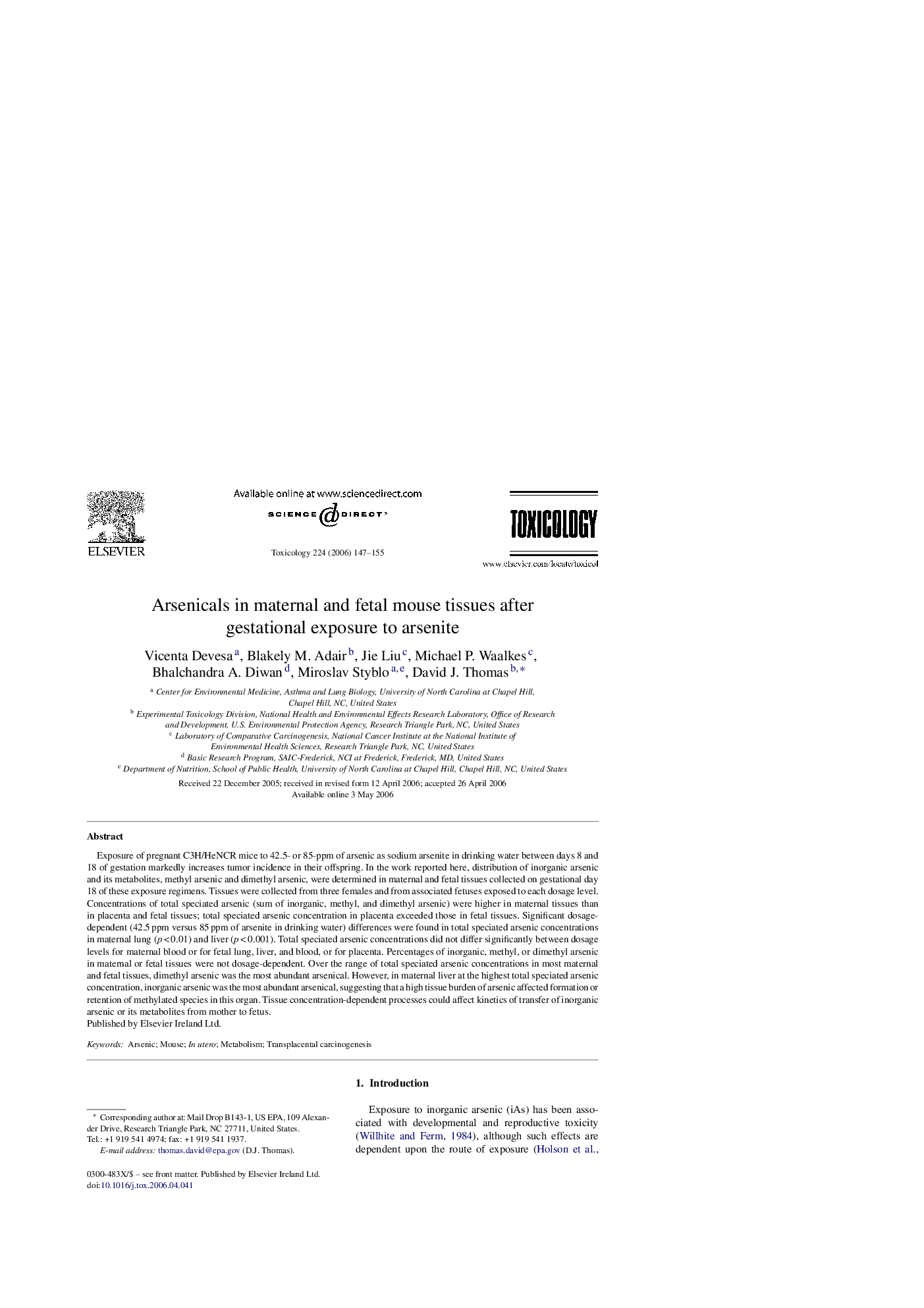| Article ID | Journal | Published Year | Pages | File Type |
|---|---|---|---|---|
| 2598220 | Toxicology | 2006 | 9 Pages |
Abstract
Exposure of pregnant C3H/HeNCR mice to 42.5- or 85-ppm of arsenic as sodium arsenite in drinking water between days 8 and 18 of gestation markedly increases tumor incidence in their offspring. In the work reported here, distribution of inorganic arsenic and its metabolites, methyl arsenic and dimethyl arsenic, were determined in maternal and fetal tissues collected on gestational day 18 of these exposure regimens. Tissues were collected from three females and from associated fetuses exposed to each dosage level. Concentrations of total speciated arsenic (sum of inorganic, methyl, and dimethyl arsenic) were higher in maternal tissues than in placenta and fetal tissues; total speciated arsenic concentration in placenta exceeded those in fetal tissues. Significant dosage-dependent (42.5 ppm versus 85 ppm of arsenite in drinking water) differences were found in total speciated arsenic concentrations in maternal lung (p < 0.01) and liver (p < 0.001). Total speciated arsenic concentrations did not differ significantly between dosage levels for maternal blood or for fetal lung, liver, and blood, or for placenta. Percentages of inorganic, methyl, or dimethyl arsenic in maternal or fetal tissues were not dosage-dependent. Over the range of total speciated arsenic concentrations in most maternal and fetal tissues, dimethyl arsenic was the most abundant arsenical. However, in maternal liver at the highest total speciated arsenic concentration, inorganic arsenic was the most abundant arsenical, suggesting that a high tissue burden of arsenic affected formation or retention of methylated species in this organ. Tissue concentration-dependent processes could affect kinetics of transfer of inorganic arsenic or its metabolites from mother to fetus.
Related Topics
Life Sciences
Environmental Science
Health, Toxicology and Mutagenesis
Authors
Vicenta Devesa, Blakely M. Adair, Jie Liu, Michael P. Waalkes, Bhalchandra A. Diwan, Miroslav Styblo, David J. Thomas,
